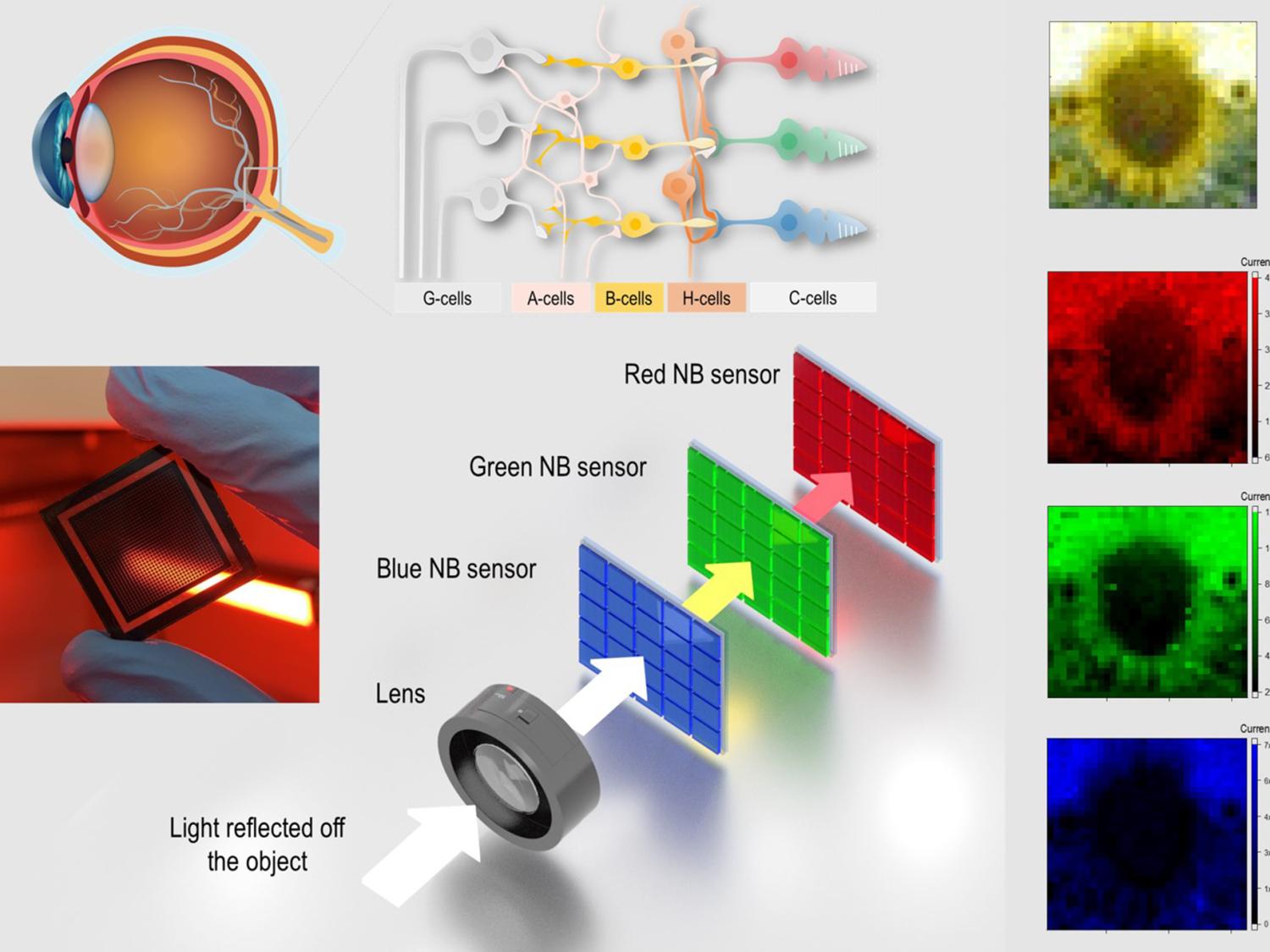
The much-awaited Galaxy M15 5G from Samsung has fi...
news-extra-space

 Image credit- Penn State University[/caption]
"Our retinas contain cone cells that are sensitive to red, green, and blue light and a neural network that starts processing what we are seeing even before the information is transmitted to our brain," Kai Wang said. The vibrant world we can see is the result of this natural process.
The scientists created a sensor array utilizing narrowband perovskite photodetectors that closely resemble the cone cells in our eyes in order to replicate this complex system in an artificial device.
They attached this sensor array to a neuromorphic algorithm that was created to mimic the functionalities of the neural network, enabling the processing of data and the creation of high-quality photographs.
The core of cameras and other optical technology, photodetectors are essential for transforming light energy into electrical impulses.
[caption id="" align="aligncenter" width="700"]
Image credit- Penn State University[/caption]
"Our retinas contain cone cells that are sensitive to red, green, and blue light and a neural network that starts processing what we are seeing even before the information is transmitted to our brain," Kai Wang said. The vibrant world we can see is the result of this natural process.
The scientists created a sensor array utilizing narrowband perovskite photodetectors that closely resemble the cone cells in our eyes in order to replicate this complex system in an artificial device.
They attached this sensor array to a neuromorphic algorithm that was created to mimic the functionalities of the neural network, enabling the processing of data and the creation of high-quality photographs.
The core of cameras and other optical technology, photodetectors are essential for transforming light energy into electrical impulses.
[caption id="" align="aligncenter" width="700"] Image credit- ArchDaily[/caption]
The gadget can choose to focus on particular portions of the light spectrum, such as the essential red, green, and blue wavelengths that make up visible light, thanks to the team's use of narrowband photodetectors.
According to the researchers, the use of perovskite materials in the gadget allows for the creation of electricity by light absorption, potentially opening the door for battery-free camera technology.
The device's structure is similar to that of solar cells, according to Luyao Zheng, a postdoctoral researcher at Penn State, and it produces electricity when exposed to light.
Also read: How to mirror an iPhone to a screen without Apple TV
This self-powered function, similar to our eyes, does not require extra energy to collect visual data from light.
Additionally, this study has the potential to enhance artificial retina biotechnology, opening the door to the possibility of replacing harmed or dysfunctional cells in the eyes in order to restore eyesight.
Image credit- ArchDaily[/caption]
The gadget can choose to focus on particular portions of the light spectrum, such as the essential red, green, and blue wavelengths that make up visible light, thanks to the team's use of narrowband photodetectors.
According to the researchers, the use of perovskite materials in the gadget allows for the creation of electricity by light absorption, potentially opening the door for battery-free camera technology.
The device's structure is similar to that of solar cells, according to Luyao Zheng, a postdoctoral researcher at Penn State, and it produces electricity when exposed to light.
Also read: How to mirror an iPhone to a screen without Apple TV
This self-powered function, similar to our eyes, does not require extra energy to collect visual data from light.
Additionally, this study has the potential to enhance artificial retina biotechnology, opening the door to the possibility of replacing harmed or dysfunctional cells in the eyes in order to restore eyesight.
Leave a Reply






